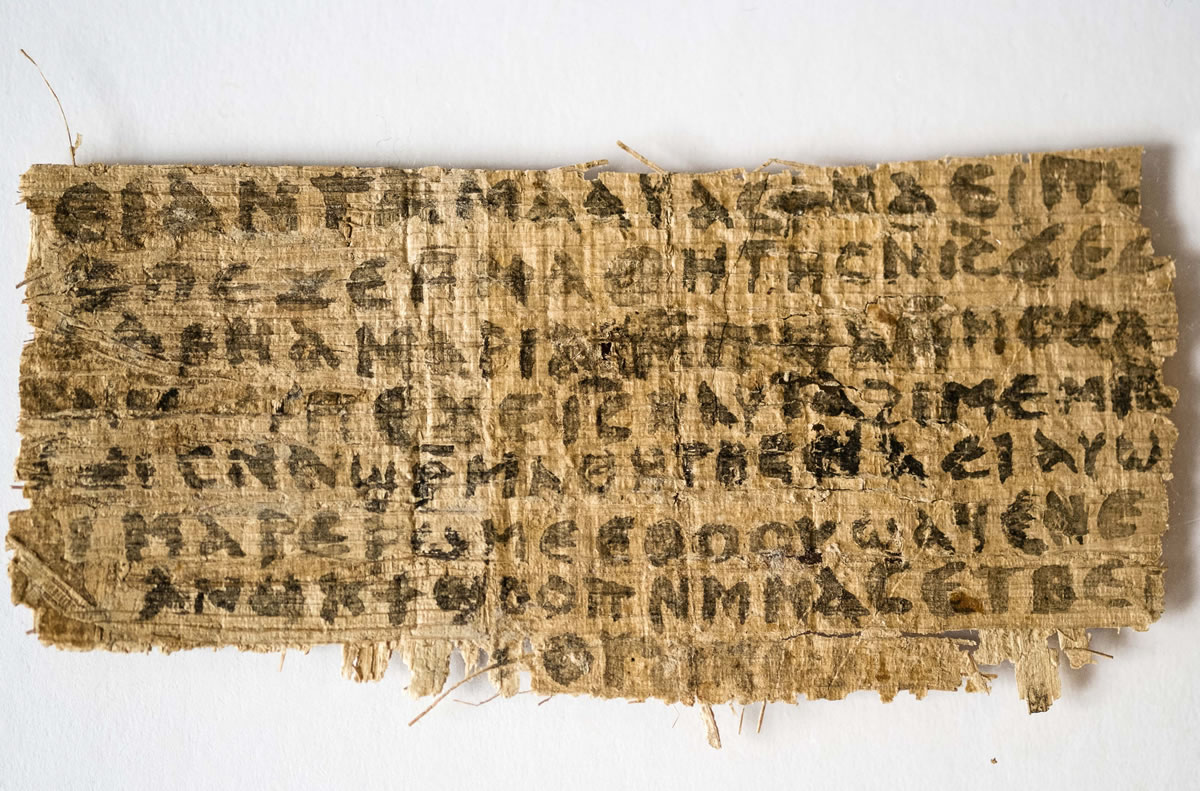A scrap of papyrus dated to the fourth century has written on it in the ancient Coptic language, “Jesus said to them, my wife,” reopening the debate about whether Jesus was married, as some early Christians believed.
The words on the honey-colored fragment are the first to show Jesus referring to a wife, according to Karen King, a professor of divinity at Harvard Divinity School in Cambridge, Mass., who presented the finding Tuesday at the International Congress of Coptic Studies in Rome. The writing in black ink is in the language of Egyptian Christians on a fragment of about 1.5 by 3 inches.
The fragment likely is authentic, based on the papyrus and handwriting, Roger Bagnall, director of the Institute for the Study of the Ancient World in New York said in a statement from Harvard. Early Christians didn’t agree about whether they should marry or remain celibate, and the earliest claim Jesus didn’t marry is from A.D. 200, King said.
“One of the things we do know is that very rarely in ancient literature was the marital status of men discussed,” King said. “Silence in marital status is normal.”



